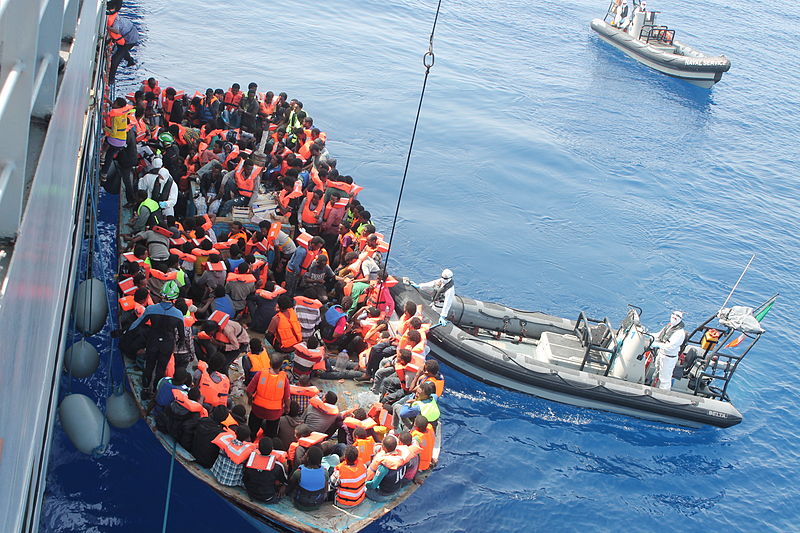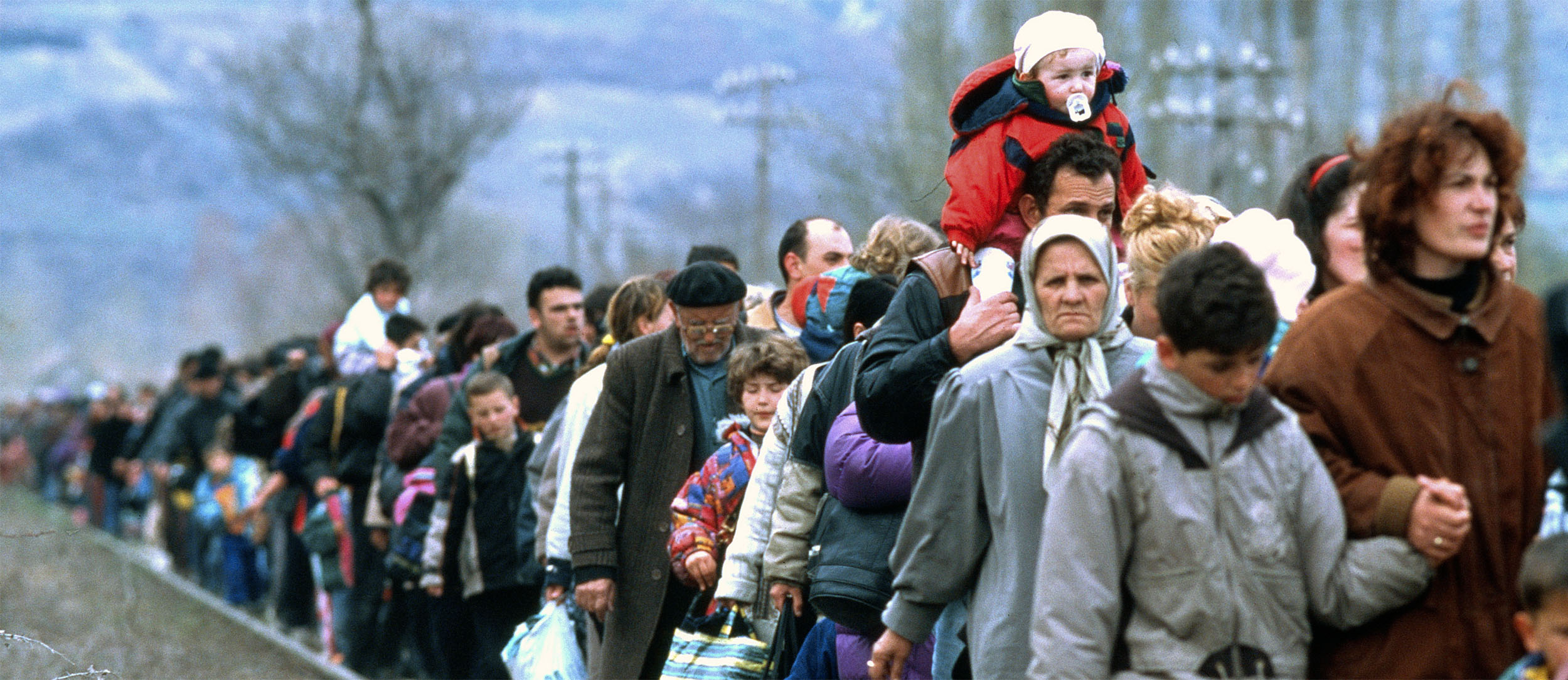Trapped in despair: ‘The Great Escape’ in the Mediterranean

According to the latest numbers of the UNHCR, more than 35,000 persons have crossed the Mediterranean in 2015 and more than 1600 have died. Persons on board of these boats have various reasons to take such dangerous routes.
‘I am about to take the boat of death,’ he wrote. ‘Try to stop me.’
On Monday 20 April 2015, the Foreign and Interior Ministers of the EU and the Commission presented a 10-point plan on migration in response to the recent deaths in the Mediterranean Sea. The tragedies that triggered the debate was the capsizing of a boat with 850 people on board near the Libyan coast, which has been the deadliest incident so far. A few days earlier, 400 persons lost their lives. According to the latest numbers of the UNHCR, more than 35,000 persons have crossed the Mediterranean in 2015 and more than 1600 have died. Persons on board of these boats have various reasons to take such dangerous routes. There are persons attempting to escape poverty and there are persons escaping war zones with the purpose to seek asylum in the EU. These so-called ‘mixed migration’ movements in overcrowded boats in the Mediterranean are not a new phenomenon.
‘Mare Nostrum’ v. ‘Triton’
Subsequent to the 10-point action plan, the European Council held a special meeting. One of the outcomes of this meeting is ‘strengthening our presence at sea’ and therefore the EU should triple the financial resources of the Frontex-led ‘Triton’ operation ‘allowing to increase the search and rescue possibilities within the mandate of Frontex’. The current Triton operation has a monthly budget of 2.9 million Euros. In contrast, the Italian-led ‘Mare Nostrum’ (‘Our Sea’) operation that lasted from October 2013 till October 2014 had a monthly budget of 9 million Euros. Another important difference with Triton is that Mare Nostrum operated beyond Italian territorial waters, whereas Triton operates in a limited 30 miles zone from the coast. More significantly, the objectives of Mare Nostrum were not only to control the migration movements at sea, but also to save human lives. During the period that Mare Nostrum operated more than 100,000 persons have been saved.
It remains questionable to what extent the ‘upgrading’ of the Triton operation will contribute to saving lives. When Triton was launched, the Commission stated that the role of Frontex is to secure the EU’s external border and incidentally may involve in humanitarian emergencies and rescue at sea. Frontex has specified ‘while saving lives is an absolute priority in in all maritime operations coordinated by Frontex, the focus of Joint Operation Triton will be primarily border management.’ More recently, in response to the deaths at sea, the head of Frontex, Mr. Fabrice Leggeri, straightforwardly responded that ‘saving migrants’ lives in the Mediterranean should not be the priority’ and that ‘Triton cannot be a search-and-rescue operation’.
The Mediterranean route
Other priorities the EU has committed to are ‘fighting traffickers in accordance with international law’ and ‘preventing illegal migration flows’. The EU puts much importance in terminating the activities of traffickers or smugglers. Let me be clear, putting an end to such criminal networks is absolutely welcomed. However, the reasons to take such desperate migratory sea routes offered by human smugglers are, as rightly stated by prof. de Haas, ‘a reaction to border controls, not the cause of migration’. To apply for asylum in the EU, a person has to be in the territory, in the territorial waters or in the transit zones of the Member States. Visa requirements in combination with carrier sanctions have made it practically very challenging for persons to enter the EU through existing legal channels. Therefore, most persons with asylum purposes have no other alternatives than to resort to human smugglers and to take irregular routes through the Mediterranean.
The last priority stipulated by the EU is to ‘reinforce internal solidarity and responsibility’. The terms ‘solidarity and responsibility have gradually become hollow promises. Despite some aspiring commitments such as ‘increase emergency aid to frontline Member States and consider options for organising emergency relocation between all Member States on a voluntary basis’, the overall result to genuinely demonstrate solidarity with the Member States located at the external border remains inadequate.
Concluding remarks
Unquestionably, the present migration challenges are complex, which calls for an analysis in broader perspective. Therefore, the Commission will soon adopt a new European Agenda on Migration that will lay down the long-term measures. With respect to asylum, the Commission addressed the need to create more legal routes to enter the EU safely. In this context, it is interesting to note that the European Parliament has published a study on the concept of ‘humanitarian visas’, which could be considered as a viable alternative entry route to the EU in a safe and legal manner. Brazil is an example that has issued ‘humanitarian visas’ to Syrian refugees through its embassies in the region. Discussions on establishing safer entry mechanisms to enter the EU have taken place for more than a decade. It is time for the EU and its Member States to take concrete steps and to explore the possibilities to implement safe legal ways to access protection in Europe in order to allow persons to seek asylum without risking their lives.
Other blogs:
Also read
-
It took quite a while before the European countries realized and recognized that the influx from asylum-seekers via the Mediterranean Sea and Turkey into the European Union is not just a matter of controlling the outside borders of the Union, but also a humanitarian and human rights issue. Some...
-
I am sure you have heard that the Bulgarian government built a fence on the Bulgarian – Turkish border and that the ‘refugee crisis’ put the national asylum system to the test. What about the Bulgarian integration policies? Did you know that currently refugees in Bulgaria face ‘zero’ integration...
-
We are getting better and better at knowing how to help traumatized children. And how we can prevent childhood trauma. That knowledge is of great importance for refugee children, and not only for them. It would prove very helpful to all children if the gap between what we know and what we do in...


